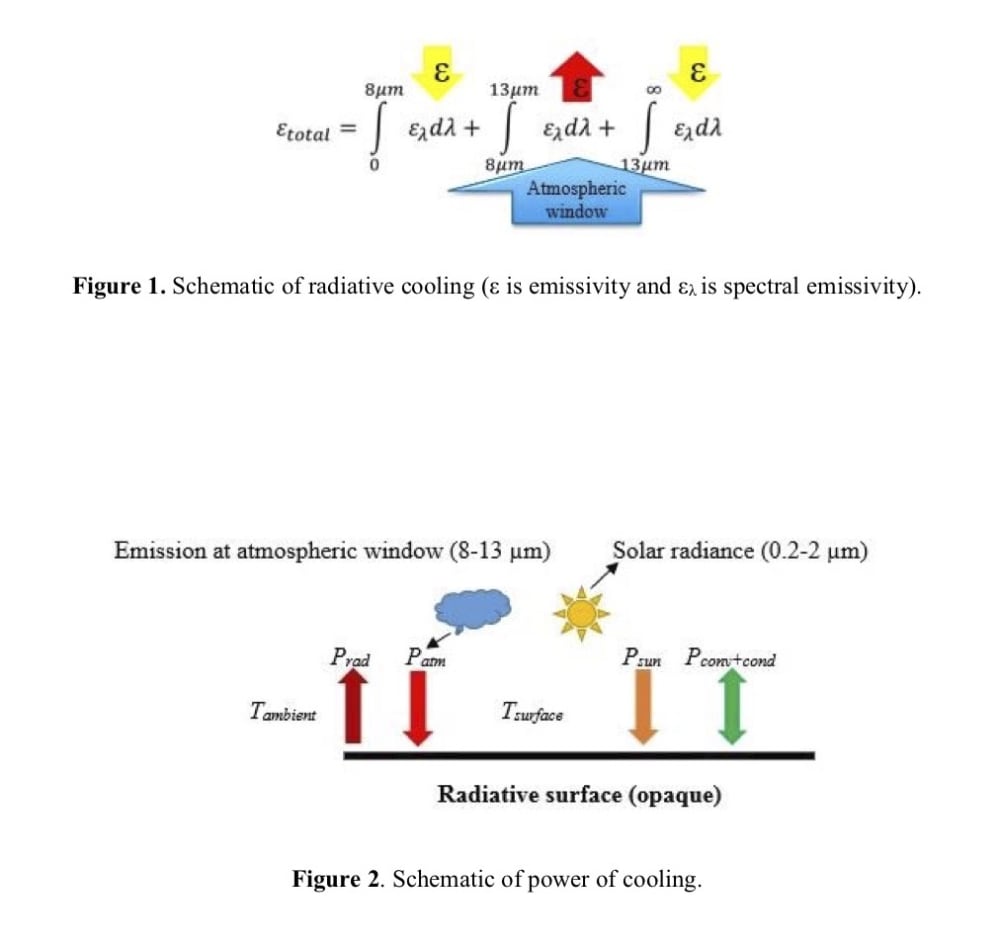The optical and structural properties of a material determine how a surface absorbs, emits, transmits or reflects radiative energy. From the various methods for modifying the radiative properties of a surface, paints and coatings possess a clear advantage with respect to cost, ease of application, and simplicity. Paint and coating development through careful design and fabrication has the potential to develop more useful spectral and directional radiative properties, which is the main focus of this design. My design is the fabrication of a Nano Titanium with desired spectral or directional performance to achieve reduction in vehicle (car) roof heating loads. Radiative cooling requires high spectral emissivity/absorptivity, within the atmospheric window (8–13 μm), and low emissivity/absorptivity in other bands.
The heat island phenomenon is the cause of numerous problems. These include: lack of comfort, negative health effects, and energy consumption increases. To tackle these problems, radiative coolers or “cool materials” are coated on the skins of surfaces. The terms “radiative cooling” and “atmospheric window” are two principal terms governing the cooling the surfaces. The atmospheric window has a spectral wavelength range of 8–13 µm, where the heat radiation of bodies on the ground is mostly focused. Radiative cooling implicates that objects on the surface of the Earth attain a cooling power by radiating heat to the cold outer space through the atmospheric windows. The material spectral emissivity/absorptivity should be high in the atmospheric windows and low in other bands to achieve radiative cooling.
Spectrally selective materials or cool materials can be useful in cooling an object exposed to incident radiation from a high-temperature source. Accordingly having high spectral emissivity or spectral absorptivity (Kirchhoff’s law) in the atmospheric window is essential for the success of radiative cooling. Hence, the radiative cooling surface should have low spectral absorptivity or spectral emissivity in the bands that exclude the atmospheric window, which demonstrates that it could reject most radiated heat from the sky and the ambient.
This design aimed to increase the radiative cooling on the roofs of the cars by employing TiO2-pigmented paints on car roof metal substrate for preventing the dangers of a hot car in hot seasons and to achieve effective thermal management in hot summer weather.
Radiative cooling on the surface of the cars by using nanomaterials is a novel design that considered in this design. In this design, for the first time there will be a look to cooling of the roofs of the cars. Hitherto, radiative cooling has not been considered for the roofs of cars. Meanwhile, extra analyses, such as evaluating the total heat transfer (coupled conduction and radiation) through the roofs of the cars, will be carried out in this work.
Like this entry?
-
About the Entrant
- Name:Roxana Family
- Type of entry:individual
- Software used for this entry:Matlab-Comsol
- Patent status:none





